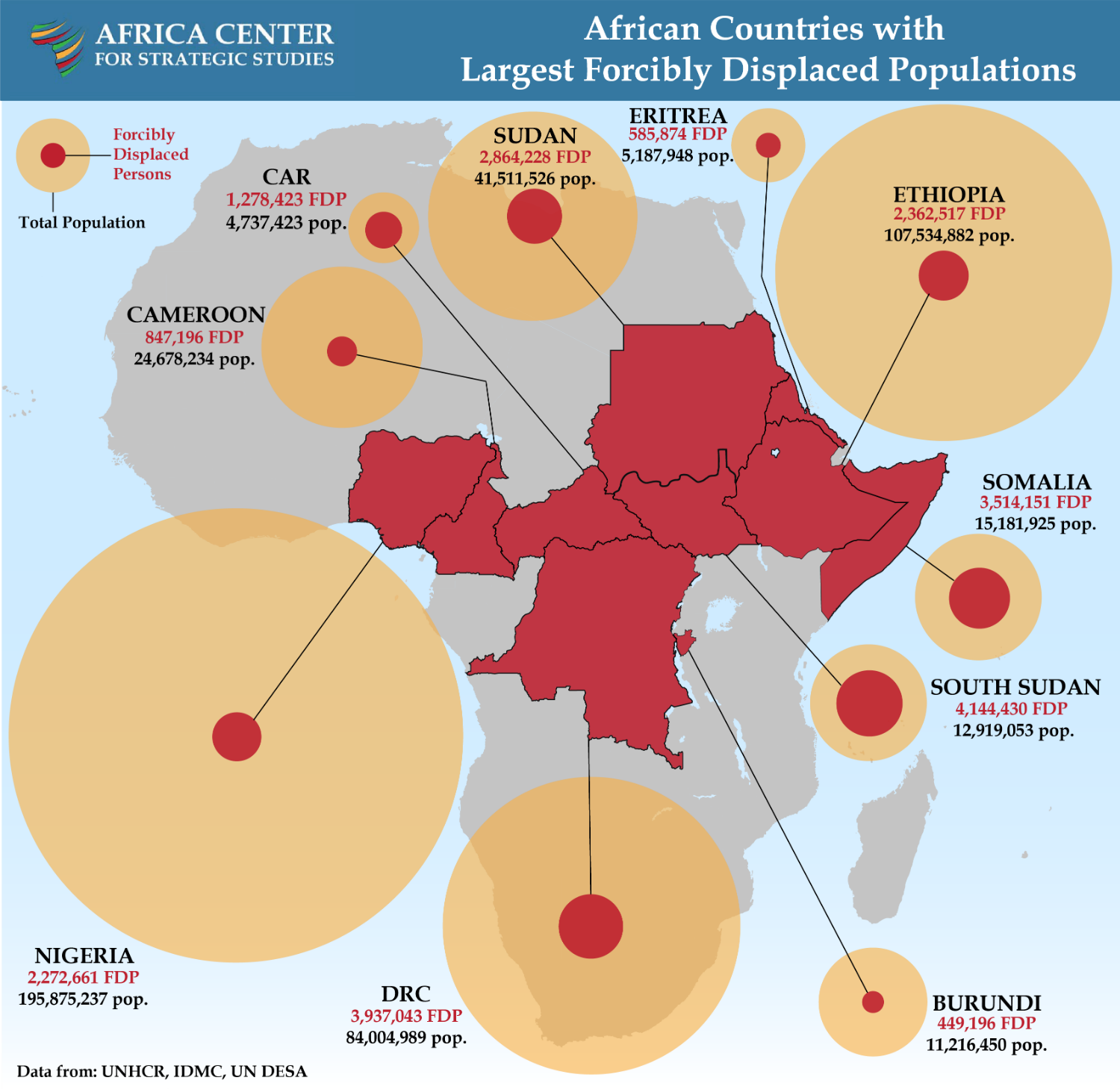Click for printable PDF version
There are 27 million people in Africa who have been forcibly displaced from their homes (internally displaced, refugees, and asylum seekers). This figure is a record and nearly triple the number of a decade ago. If forced displacements continue to grow at the current rate of 1.5 million people per year, the cumulative total will double in 18 years. Nearly all of Africa’s forced displacement is a result of conflict and repressive governance.
- Nine of the ten countries with the highest levels of forced displacement in Africa are experiencing conflict.
- Of the ten African countries with the highest numbers of forcibly displaced people, eight have authoritarian-leaning governments.
- The ten African countries with the highest levels of forced displacement create a contiguous “arc of instability.”
- The five African countries with the highest number of forcibly displaced people in proportion to their entire population are:
- South Sudan (32 percent)
- Central African Republic (27 percent)
- Somalia (23 percent)
- Eritrea (11 percent)
- Sudan (7 percent)
- The ten African countries with the highest number of forcibly displaced people also have some of the fastest growing populations and are among the least developed.
- The number of people living in the Democratic Republic of the Congo and Somalia (two of the three countries with the greatest number of forcibly displaced people) is expected to increase by around 135 percent by 2050.
- The Sahel region has the highest birth rate on the continent. The population of Niger—one of the least developed, and most environmentally threatened countries in the world—is expected to triple in the next 30 years.
- The rate of population growth in the 47 least-developed countries is 2.5 times the rate of the rest of the world. Thirty-two of those countries are in sub-Saharan Africa. Half of the ten African nations expected to have the largest populations in 2050—Angola, DRC, Ethiopia, Sudan, and Tanzania—are among the least developed.
- As Africa’s population grows, so too does the working-age (25-64 years) population—from 35 percent today to 43 percent in 2050. This could create a “demographic dividend” that can accelerate economic growth.
- To manage its population growth, however, Africa will need to address the sources of instability—conflict and repressive governance—that are diverting attention and resources from needed investments.
More on: Africa Security Trends Displacement


